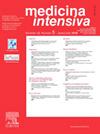Sepsis mortality prediction with Machine Learning Tecniques
IF 3.1
4区 医学
Q2 CRITICAL CARE MEDICINE
引用次数: 0
Abstract
Objective
To develop a sepsis death classification model based on machine learning techniques for patients admitted to the Intensive Care Unit (ICU).
Design
Cross-sectional descriptive study.
Setting
The Intensive Care Units (ICUs) of three Hospitals from Murcia (Spain) and patients from the MIMIC III open-access database.
Patients
180 patients diagnosed with sepsis in the ICUs of three hospitals and a total of 4559 patients from the MIMIC III database.
Main variables of interest
Age, weight, heart rate, respiratory rate, temperature, lactate levels, partial oxygen saturation, systolic and diastolic blood pressure, pH, urine, and potassium levels.
Results
A random forest classification model was calculated using the local and MIMIC III databases. The sensitivity of the model of our database, considering all the variables classified as important by the random forest, was 95.45%, the specificity was 100%, the accuracy was 96.77%, and an AUC of 95%. . In the case of the model based on the MIMIC III database, the sensitivity was 97.55%, the specificity was 100%, and the precision was 98.28%, with an AUC of 97.3%.
Conclusions
According to random forest classification in both databases, lactate levels, urine output and variables related to acid.base equilibrium were the most important variable in mortality due to sepsis in the ICU. The potassium levels were more critical in the MIMIC III database than the local database.
利用机器学习技术预测败血症死亡率
西班牙穆尔西亚三家医院的重症监护病房(ICU)和 MIMIC III 开放式数据库中的患者。主要关注变量年龄、体重、心率、呼吸频率、体温、乳酸水平、氧饱和度、收缩压和舒张压、pH值、尿液和血钾水平。结果利用本地数据库和MIMIC III数据库计算出随机森林分类模型。考虑到所有被随机森林分类为重要的变量,我们数据库的模型灵敏度为 95.45%,特异度为 100%,准确度为 96.77%,AUC 为 95%。.结论根据两个数据库的随机森林分类,乳酸水平、尿量和酸碱平衡相关变量是影响重症监护室败血症死亡率的最重要变量。与本地数据库相比,MIMIC III 数据库中的钾水平更为重要。
本文章由计算机程序翻译,如有差异,请以英文原文为准。
求助全文
约1分钟内获得全文
求助全文
来源期刊

Medicina Intensiva
CRITICAL CARE MEDICINE-
CiteScore
2.70
自引率
20.00%
发文量
146
审稿时长
33 days
期刊介绍:
Medicina Intensiva is the journal of the Spanish Society of Intensive Care Medicine and Coronary Units (SEMICYUC) and of Pan American and Iberian Federation of Societies of Intensive and Critical Care Medicine. Medicina Intensiva has become the reference publication in Spanish in its field. The journal mainly publishes Original Articles, Reviews, Clinical Notes, Consensus Documents, Images, and other information relevant to the specialty. All works go through a rigorous selection process. The journal accepts submissions of articles in English and in Spanish languages. The journal follows the publication requirements of the International Committee of Medical Journal Editors (ICMJE) and the Committee on Publication Ethics (COPE).
 求助内容:
求助内容: 应助结果提醒方式:
应助结果提醒方式:


